
Field Marshal Sir George Howard KB, PC was a British military officer and politician. After commanding the 3rd Regiment of Foot at the Battle of Fontenoy in May 1745 during the War of the Austrian Succession and after commanding that regiment again at the Battle of Falkirk Muir and the Battle of Culloden during the Jacobite Rebellion, he returned to the continent and fought at the Battle of Lauffeld. He went on to command a brigade at the Battle of Warburg during the Seven Years' War. He subsequently became the Governor of Minorca.

Field Marshal Hugh Gough, 1st Viscount Gough, was a senior British Army officer. After serving as a junior officer at the seizure of the Cape of Good Hope during the French Revolutionary Wars, Gough commanded the 2nd Battalion of the 87th Regiment of Foot during the Peninsular War. After serving as commander-in-chief of the British forces in China during the First Opium War, he became Commander-in-Chief, India and led the British forces in action against the Marathas defeating them decisively at the conclusion of the Gwalior campaign and then commanded the troops that defeated the Sikhs during both the First Anglo-Sikh War and the Second Anglo-Sikh War.
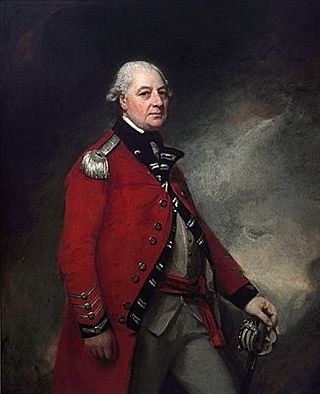
Field Marshal George Townshend, 1st Marquess Townshend, PC, known as The Viscount Townshend from 1764 to 1787, was a British soldier and politician. After serving at the Battle of Dettingen during the War of the Austrian Succession and the Battle of Culloden during the Jacobite Rising, Townshend took command of the British forces for the closing stages of the Battle of the Plains of Abraham during the Seven Years' War. He went on to be Lord Lieutenant of Ireland or Viceroy where he introduced measures aimed at increasing the size of Irish regiments, reducing corruption in Ireland and improving the Irish economy. In cooperation with Prime Minister North in London, he solidified governmental control over Ireland. He also served as Master-General of the Ordnance, first in the North Ministry and then in the Fox–North Coalition.

Sir Alured Clarke was a British Army officer. He took charge of all British troops in Georgia in May 1780 and was then deployed to Philadelphia to supervise the evacuation of British prisoners of war at the closing stages of the American Revolutionary War. He went on to be Governor of Jamaica and then lieutenant-governor of Lower Canada in which role he had responsibility for implementing the Constitutional Act 1791. He was then sent to India where he became Commander-in-Chief of the Madras Army, then briefly Governor-General of India and finally Commander-in-Chief of India during the Fourth Anglo-Mysore War.

Alexander Lindsay, 6th Earl of Balcarres and de jure 23rd Earl of Crawford was a Scottish nobleman, soldier, politician and colonial administrator. He was the son of James Lindsay, 5th Earl of Balcarres. He was a general in the British Army.
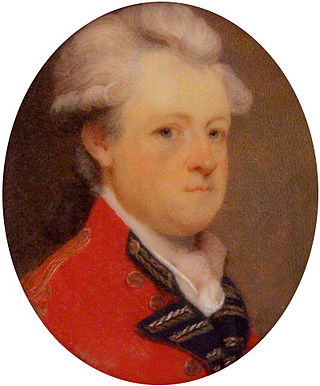
Field Marshal William Harcourt, 3rd Earl Harcourt, was a British nobleman and British Army officer. He served as an aide-de-camp to Lord Albemarle for the expedition to Havana during the Seven Years' War. He also commanded his regiment at the Battle of White Plains and then captured General Charles Lee at Basking Ridge during the American Revolutionary War. After that he commanded the British Cavalry at the Battle of Willems during the Flanders Campaign. He succeeded the Duke of York as commander during that campaign and oversaw the British retreat and their final evacuation from Bremen. His last main military role was as Governor of the Royal Military College at Great Marlow.
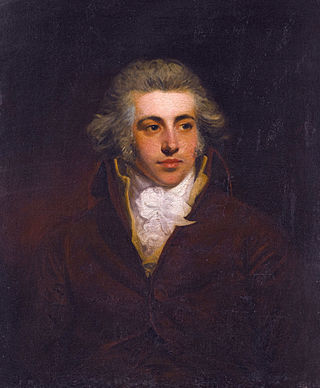
Lord Henry FitzGerald PC (Ire) was the fourth son of the 1st Duke of Leinster and the Duchess of Leinster. A younger brother was the revolutionary Lord Edward FitzGerald.
The 130th Regiment of Foot was an infantry regiment of the British Army, created in 1794. After being raised it was sent to the West Indies, where it suffered heavy losses from tropical disease. The unit was disbanded at Santo Domingo in 1796, with the survivors drafted into other regiments.
The 83rd Regiment of Foot was a British Army line infantry regiment, which was formed in Ireland in 1793 for service in the French Revolutionary Wars. The regiment served in the West Indies, South Africa and the Peninsular War, and after the end of the wars with France spent much of the nineteenth century in colonial garrisons. Among other service, the 83rd fought in the Ceylon Great Rebellion of 1817–18, the Canadian Rebellions of 1837, and the Indian Rebellion of 1857. Under the Childers Reforms, the regiment amalgamated with the 86th Regiment of Foot to form the Royal Irish Rifles in 1881.

Field Marshal Sir Samuel Hulse, GCH was a British Army officer. He saw his first active duty during the Gordon Riots in June 1780 before commanding the 1st Battalion of the 1st Regiment of Foot Guards at key battles of the Flanders Campaign during the French Revolutionary Wars. He also commanded the 1st Guards Brigade at a later battle and then joined the retreat into Germany during the closing stages of the Flanders Campaign. He later took part in the Anglo-Russian invasion of Holland and then returned to England to become General Officer Commanding South East District. After completing active service in the Army, he served in the household of King George IV.

General Sir David Dundas was a British Army officer who fought in the Seven Years' War and French Revolutionary Wars, wrote important texts on the Principles of Military Movements and then served as Commander-in-Chief of the Forces from 1809 to 1811.
Major-General The Honourable George Walpole, was a British soldier and politician. He gained distinction after suppressing the Maroon insurrection in Jamaica in 1795. After entering Parliament in 1797, he served as Under-Secretary of State for Foreign Affairs from 1806 to 1807 in the Ministry of All the Talents headed by Lord Grenville.
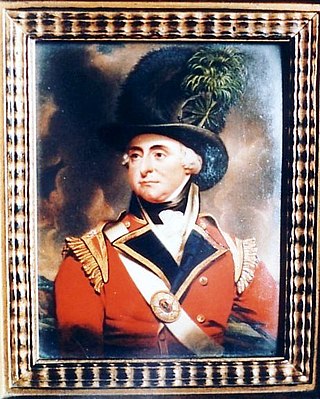
General Robert Manners was a British Army officer and Member of Parliament.

Juan Courten y Gonzalez was a Spanish military officer. He began his career in the War of the Austrian Succession at the age of 14. Courten fought in the Spanish–Portuguese War (1761–1763), the Invasion of Algiers in 1775, and the Great Siege of Gibraltar. He was the last Spanish governor of Oran in 1792. As a lieutenant general, he led an infantry division during the War of the Pyrenees against the First French Republic in several actions including Perpignan, Peyrestortes, Truillas, Boulou, and the Black Mountain. He was appointed Captain General of Aragon in 1795.
Lieutenant-General Hon. John Meade CB was an Irish officer in the British Army. After leaving the professional army he served as a militia officer in Ireland, and sat in the House of Commons of the United Kingdom for twelve years before taking up a diplomatic post.
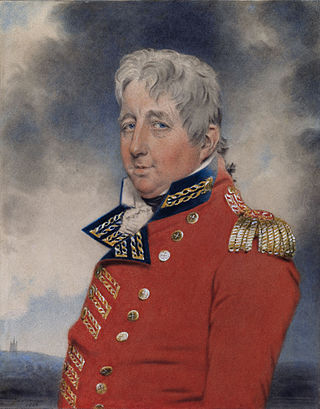
Lieutenant-General Richard G. England of Lifford, County Clare was a British Army officer who became Lieutenant-Governor of Plymouth.
Lieutenant-General Francis D'Oyly (c.1750–1803) was a British Army officer.
The 88th Regiment of Foot was an infantry regiment in the British Army from 1779 to 1783, formed during the American Revolutionary War. It was raised in Worcestershire under Colonel Thomas Keating and saw service in Jamaica. It was disbanded in England in 1783 at the end of the war.
Spy was built in France in 1780, almost surely under another name, and taken in prize. The British East India Company (EIC) purchased her in 1781 and used her for almost two years as a fast packet vessel and cruiser based in St Helena. It then sold her and she became a London-based slave ship, making two voyages in the triangular trade carrying enslaved people from West Africa to the West Indies. She then became a whaler, making seven whaling voyages between 1786 and 1795. She was probably wrecked in August 1795 on a voyage as a government transport.
General Sir George Pigot, 3rd Baronet (1766–1840) was a British Army officer. The son of Lieutenant-General Sir Robert Pigot, 2nd Baronet he served in the 38th Regiment of Foot, 1st (Royal) Regiment of Foot and the Independent Companies before being asked to recruit his own unit, the 130th Regiment of Foot, in 1794. Pigot was granted command of the unit, as lieutenant-colonel, in 1795. It served in the West Indies where it was almost wiped out by disease and disbanded in 1796. Pigot inherited the baronetcy in 1796 and was appointed deputy lieutenant of the Staffordshire Militia in 1797. He was reappointed to the army in 1800 and was promoted to major-general in 1812 and to general in 1825.












